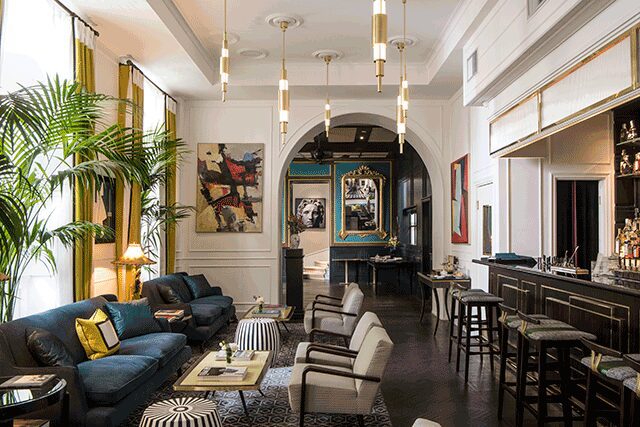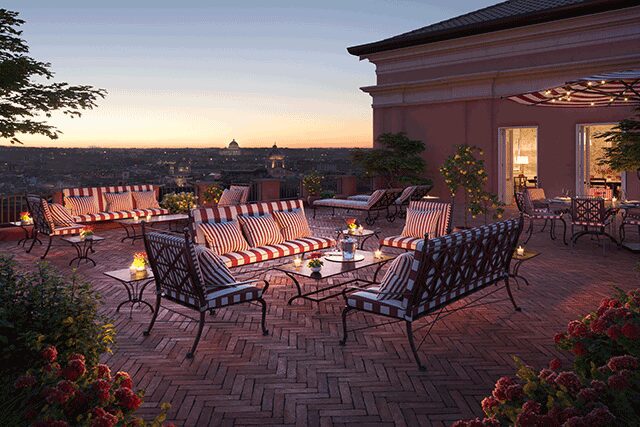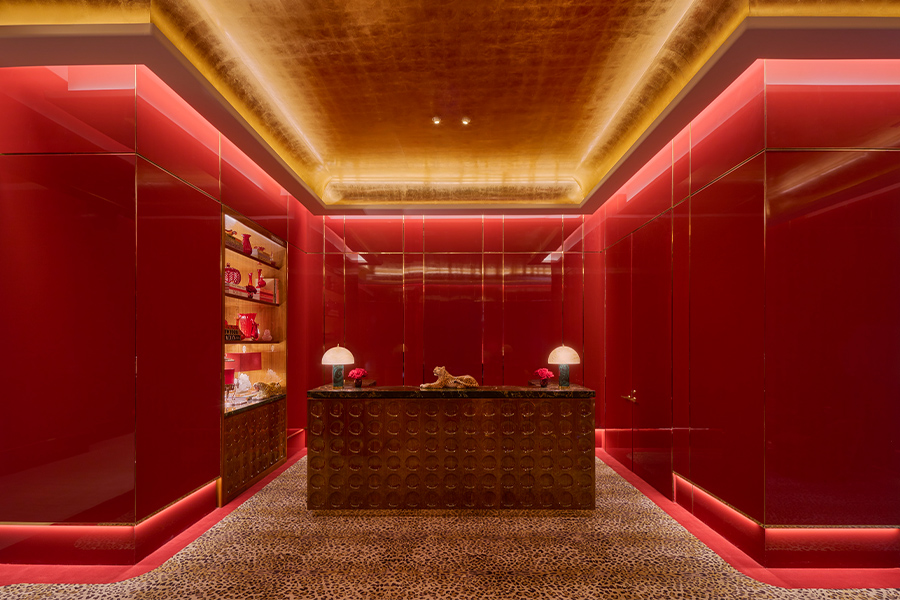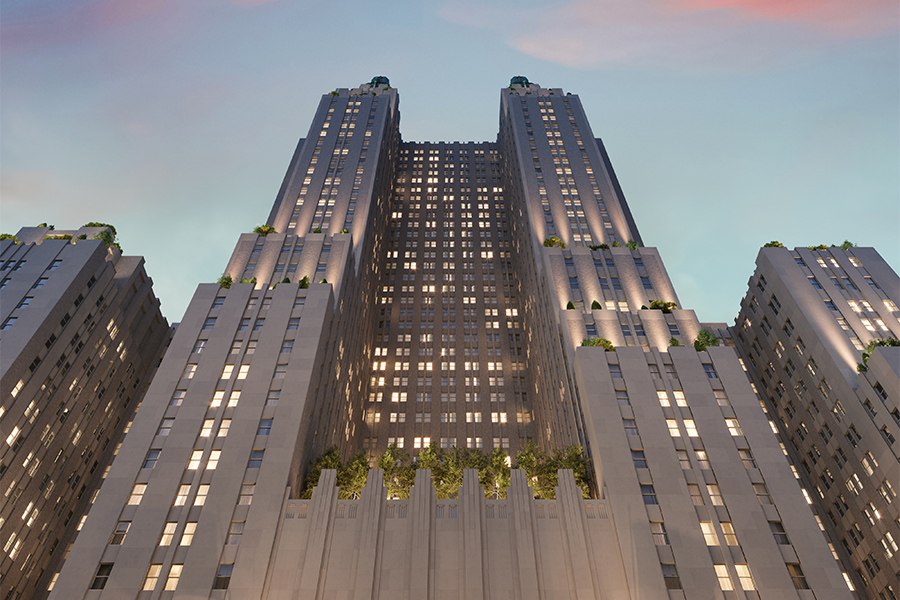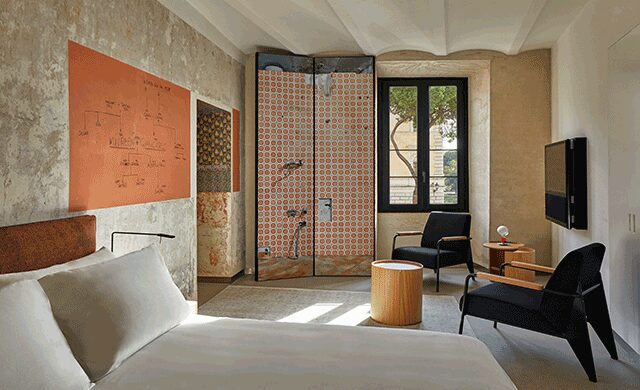
The Rooms of Rome
The ancient Italian city’s appeal goes hand-in-hand with its proximity to history. Truly millions—in 2017, Rome recorded 29 million overnight stays—flock here to take in a piece of the past and indulge in the city’s friendliness firsthand. “Our ancient culture, before manifesting itself in these forms, is savored through our sense of hospitality,” says homegrown designer Paolo Bonfini, one of the minds behind Hotel Vilòn. In addition to the extravagant 17-month renovation of the iconic Hotel Eden by French firms 4BI & Associés and Jouin Manku, and Italian architect Giuseppe Valadier’s thoughtful restoration of a 19th-century building into First Roma Dolce, the Italian capital is expected to see 1,800 rooms enter the market by the end of the year. Also to come is the highly anticipated reveal of two Rocco Forte properties, including the Rocco Forte House, and further out, the city’s first W Hotel in 2021.
Hotel Vilòn > Found in the Campo Marzio section of the city in a property that once belonged to the Borghese family is Hotel Vilòn. The 16th-century palazzo brings together classic luxury with an eclectic design. “More than looking for a design line, I created a collage of styles that are part of our history,” says designer Paolo Bonfini, who converted the 18 guestrooms into charming interpretations of ancient Rome. “Each color has been thought of in relation to the building and to the Borghese garden,” he explains. The hotel is also home to a lounge bar, Adelaide restaurant, and an outdoor garden, all conceived by Giampiero Panepinto. However, transforming the narrow inner patio from a blank slate to fecund garden proved to be challenging for the Milanese architect and designer. To give the impression that it had been dense with plants for centuries, Panepinto’s team chose flora that grows rapidly.
The Pantheon Iconic Rome Hotel > Marriott’s Autograph Collection, Unica Collection, and Studio Marco Piva collaborated on a new luxury concept that captures Rome’s heritage. The Milanese firm’s vision for the 79-key hotel was to highlight the city’s monumental history in a contemporary way. In the lobby, that meant showcasing glossy black Sahara Noir stoneware floors alongside bronze arches and white gypsum vaults. Ceilings recall the Pantheon Oculus with LED-lit centers, while the reception and lobby desks are marble monoliths in Calacatta gold. On the sixth floor, the Divinity Restaurant and its accompanying terrace lounge bar offer guests sweeping vistas of the ancient city.
Hotel de la Ville > Residing alluringly at the top of the Spanish Steps, Rocco Forte Hotels’ second property in Rome, the 104-room Hotel de la Ville is slated to open in May with a design that pays homage to its location. It’s the fourth collaboration between director of design Olga Polizzi and Italian architect Tommaso Ziffer, who was inspired by the era of the Grand Tour. Here, he retells the 17th- and 18th-century European sojourns of upper-class Londoners through a deliberately maximalist lens. “We’re trying to relive that feeling using modern techniques,” he says, opting for bold colors, black and white flooring, and wallcoverings remade from ancient tapestries. Ziffer took the theme one step further by recreating a traditional print room—a space where old paintings, drawings, and photographs are displayed—for his favorite spot, the second-floor lounge. The 18th-century building also serves as a muse and a backdrop to the vividly charged design. “I’m revamping a building and making it better” without changing its history, he says.
The Rooms of Rome > Found in the centuries-old Roman Forum, Room Mate’s Rooms of Rome from French architect Jean Nouvel is a triumphant celebration of the past. The 24 apartments occupy floors two through four of a cultural hub dubbed Rhinoceros, which was conceived by the Fondazione Alda Fendi – Esperimenti, and features a gallery on the first floor, a restaurant above, and terraces throughout. In addition to photographic linings on the interior shutters that give visitors a glimpse of the rooms as they used to be, walled-up windows, jagged cracks, worn tiles, crumbling bricks, and flaking plaster were left untouched. A welcome contrast comes from the stainless steel kitchens and bathrooms, which draw attention to mottled walls and their visible layers of paint, plaster, and the fractures within them. Modern furnishings are kept simple to highlight the classic building, while trompe l’oeil panels masked as mirrors reflect an alternative version of the room—a testament to the passage of time.

